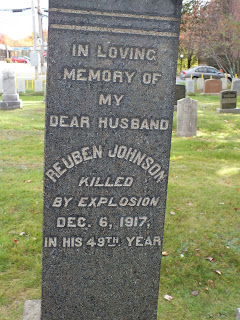Few events in history have scarred the psyche. The Halifax Explosion was one of those events. Even a century later, the Explosion marks a time when innocence was lost, families were ripped asunder and the face of a city, and indeed a country, were forever changed.
Early on the morning of 6 December 1917, a cargo ship laden with high explosives collided with another ship in the “Narrows” The Narrows is, essentially, a strait which connects Halifax Harbour to Bedford Basin.
A fire on board the cargo ship ignited the explosives on board causing an explosion that devastated the Richmond district of Halifax. It is estimated that 2,000 people were killed by the blast, the debris, the fires or the buildings that collapsed. Another 9,000 victims were injured. People were blinded, lost limbs, suffered burns.
The blast of the Halifax Explosion was the largest man-made explosion prior to the development of nuclear weapons. Nearly all structures within half-mile of the Narrows were obliterated, including the heart of the industrial area of Halifax. A tsunami created by the blast wiped out the community of Mi'kmaq First Nations people who had lived in the Tufts Cove area for generations.
As genealogists are wont to do, a wander around the cemeteries is a sobering experience. Fairview Lawn Cemetery, more famous for its Titanic Grave Site has a large area of seemingly untouched ground where remains of unknown victims of the Explosion are buried.
Mt Olivet, a Catholic Cemetery, has yellow surveyor sticks marking the graves of victims of the Explosion. Where no grave marker exists, the sticks stand in rows. Names are marked on the sticks marking the victims.
There is a permanent exhibit in the Maritime Museum of the Atlantic commemorating the devastation.
A full century later, the scars are still evident and the shock and pain still raw. The Explosion forever changed the face and the history of Halifax.













No comments:
Post a Comment